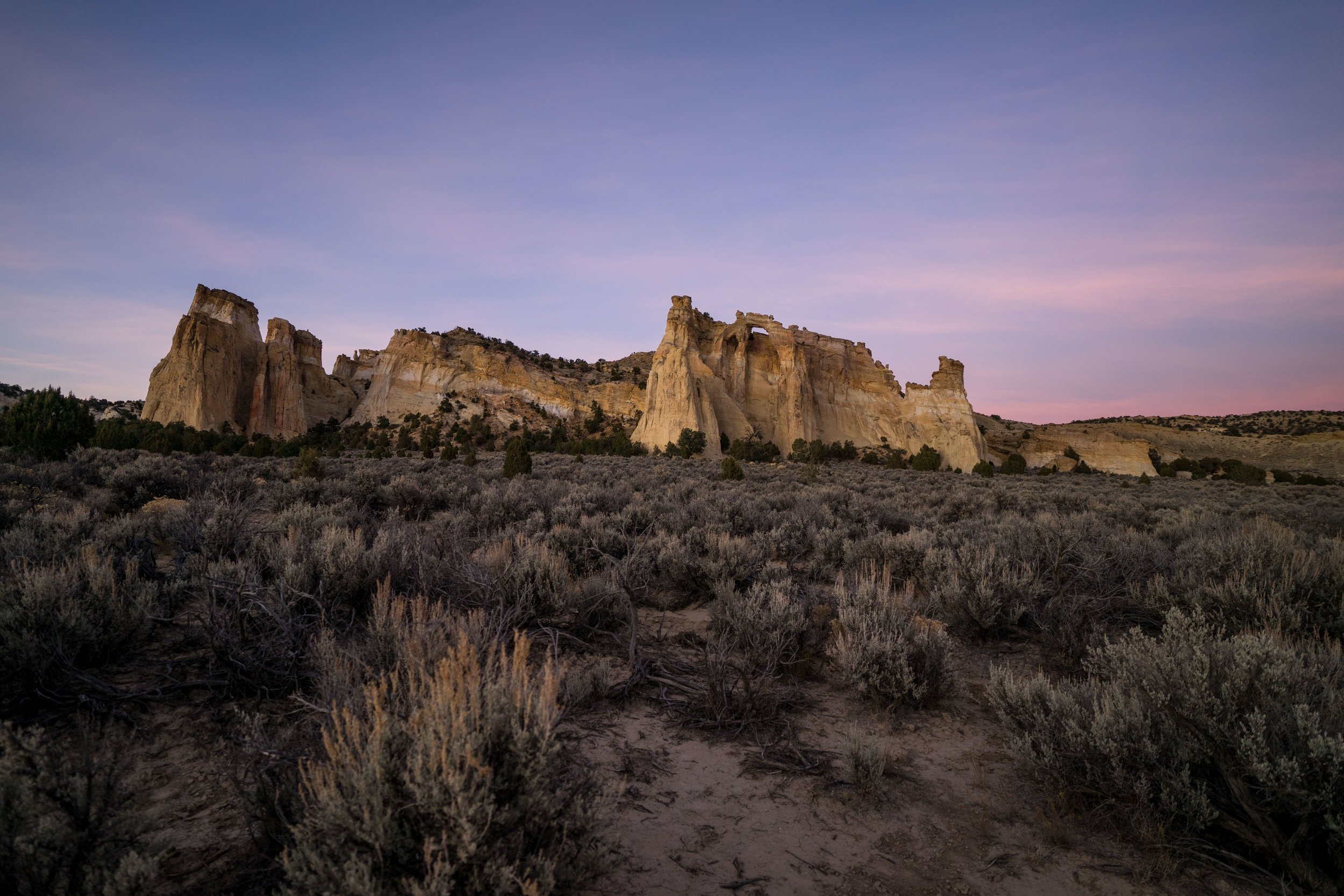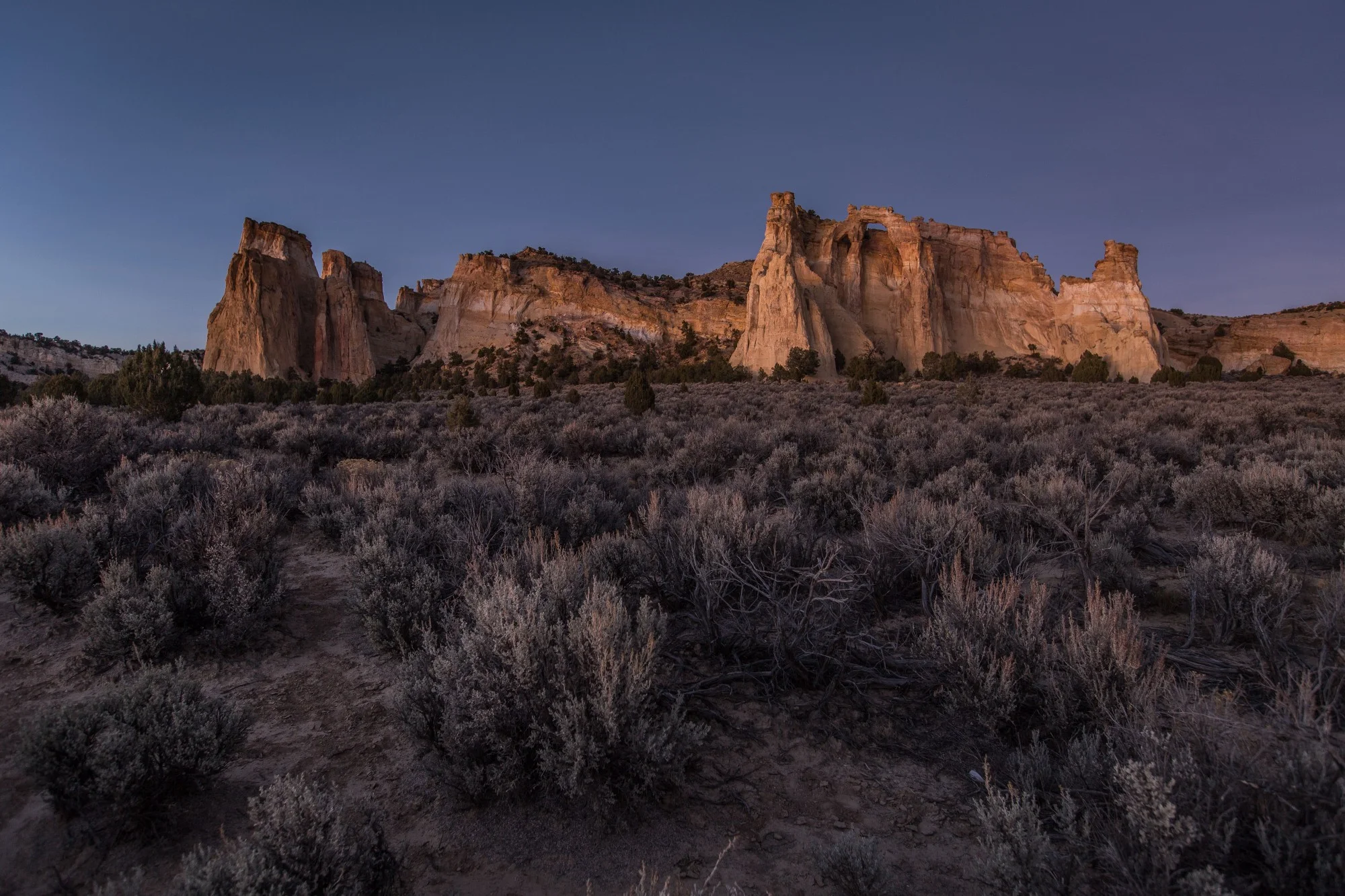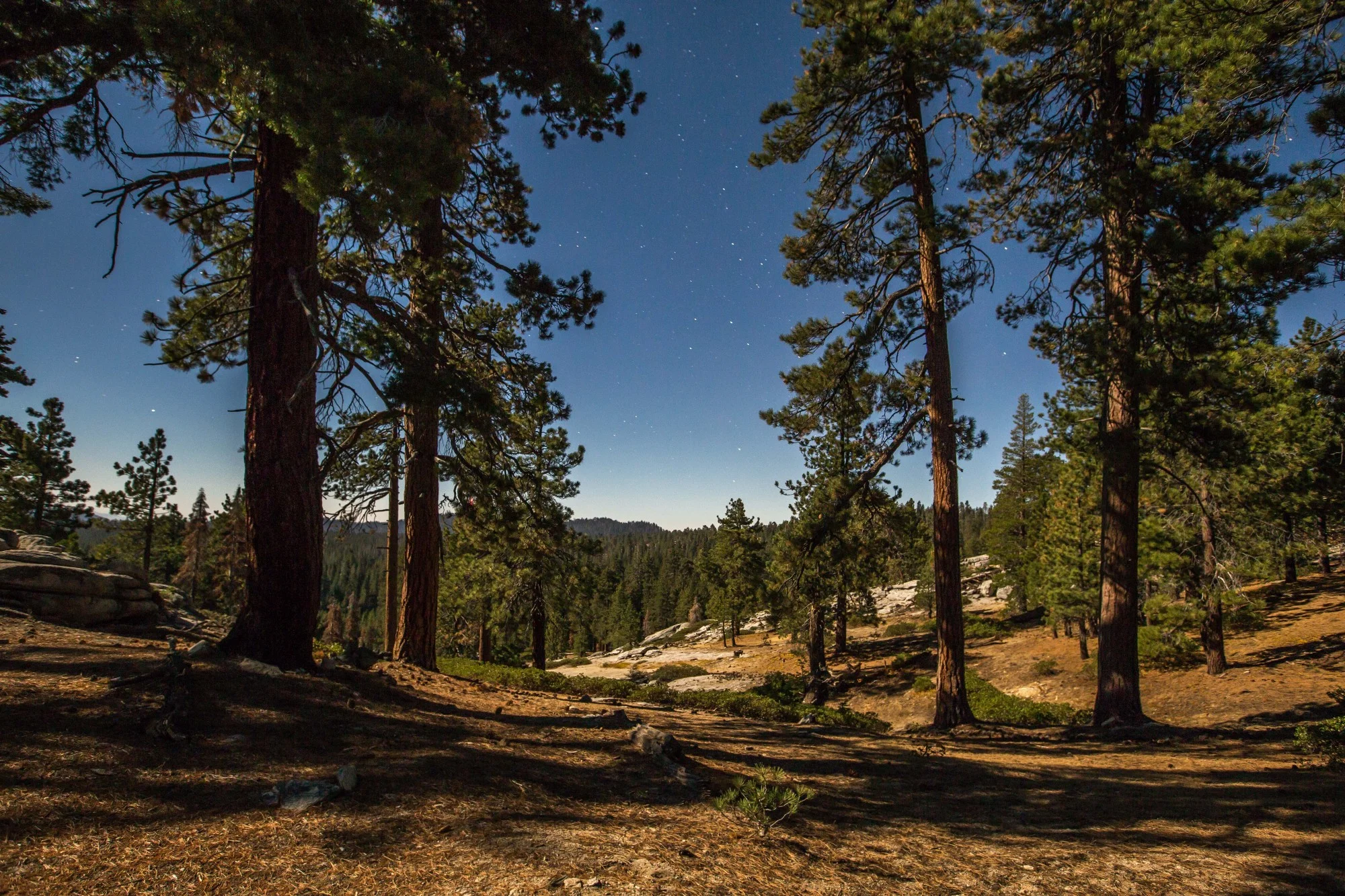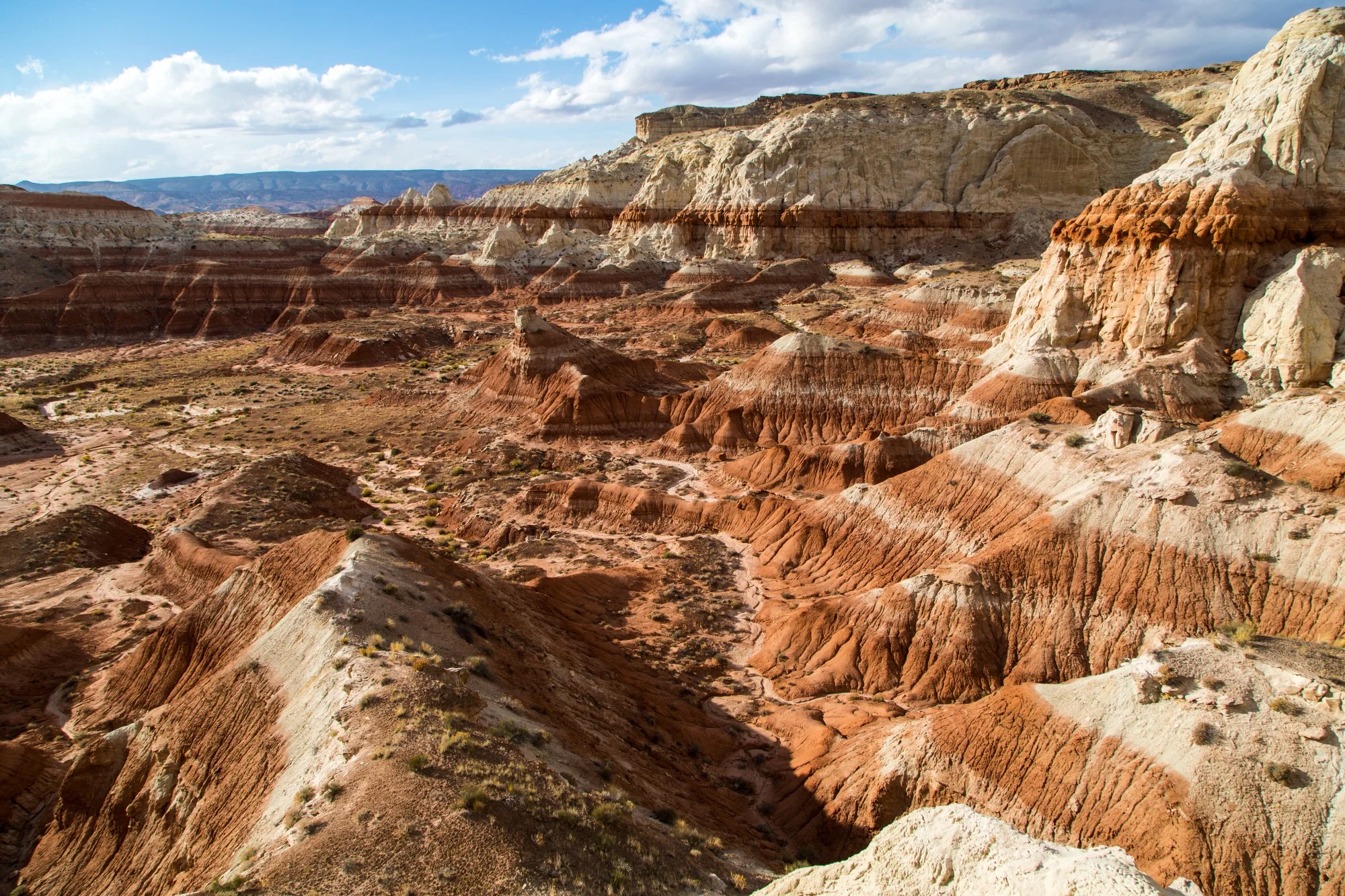GRAND STAIRCASE-ESCALANTE: After Two Decades of Conservation
Text: Andreea Lotak; Photos: Andreea & Justin Lotak • 7 min read
Grosvenor Arch
When we arrived in Kanab, UT this past fall, there were only speculations as to what would be decided by the President in regards to Grand Staircase-Escalante. Since it was one of the controversial national monuments, with some powerful Utah politicians against it, it was expected to be recommended for significant cuts. In December, those fears were confirmed when over 1 million acres of the original boundaries were called for removal and for the monument to be replaced by three different, smaller national monuments. Through our interview with Noel Poe from Grand Staircase Escalante Partners, we better understood why this place is so incredibly important and why his organization and other groups are now taking to court the fight to maintain its original boundaries.
Grand Staircase-Escalante was designated a national monument on 1.88 million acres in 1996, by President Clinton. At the time it gathered a vocal opposition among the community, led by politicians like Orrin Hatch and Rob Bishop, who complained about what they called a “federal land grab”. When we met Noel Poe, President of the Board of Directors of Grand Staircase Escalante Partners, this same opposition was back in full force, pushing for significant changes in the national monument. Noel’s love for conservation and the outdoors runs deep, as he served for three decades in the National Park Service (NPS) as superintendent to three national parks. When he moved to Kanab in 2007 he soon got involved with the Partners organization and became Executive Director before moving to his current position. Grand Staircase Escalante Partners works close together with the Bureau of Land Management (BLM) on programs in the monument, significantly supporting the federal agency’s efforts. The Partners are coordinating four main programs with a permanent staff of twelve.
One program is Outreach & Education, working with schools and bringing students outdoors to experience the national monument firsthand and understand what it protects. Another program is focused on the restoration of the Escalante River watershed, representing the collective effort of thirty organizations and fundraising over $1 million annually to remove invasive plant species. Then there is a program dedicated to archaeological survey, called the Site Steward Program. The organization has around 40 stewards who volunteer to regularly go out in the monument and survey sites to which they have been assigned. Finally, there is a program within the paleontology lab. This lab is the only one of its kind managed by the BLM. The agency employs one paleontologist, Dr. Alan Titus, so the Partners have hired another paleontologist to manage the lab and a team of 22 volunteers. Her name is Katya Knoll, a young German scientist whom we had the chance to meet the following day for a tour of the lab. Her enthusiasm for paleontology was nothing short of inspiring. She explained in a series of superlatives just how amazing the monument is for dinosaur discovery right now and how excited and happy she was to be part of this work. Her team of volunteers in the lab spends months and sometimes years to separate the fossils from the bedrock.
“That’s a really exciting program and there’s more people wanting to volunteer in this field than we have space and time to do it”, tells us Noel about the paleontology program. “We have a lot of volunteers. We track the hours and we’re in the thousands of hours of volunteer work put in through these four programs annually. The volunteers are spread out in the seven small communities in and around the monument. It’s interesting that we can draw as many volunteers willing to donate that many hours of their time every year.”
The Escalante River
This river is the site of a coordinated effort to remove invasive plant species and restore its original watershed habitat. This was a beautiful 17 mile hike through the river's gorge as fall was settling in Utah. For more photographs of the Grand Staircase-Escalante head here.
When we hit the subject of the so-called “land grab”, he observes: “This is something to really remember — when the western territories became states, the federal government that owned the land gave two sections for every township to the state to support educational facilities. Utah, when it became a state, was given four sections for every township, which could be managed for the education fund. When the national monument was established, it included a bunch of state-owned land, so the federal government and the state worked out a trade-off deal where all the [state-owned] acreage that was inside the monument [was traded for] other federal lands down by Big Water. It was all put in one big block so that the state could manage these almost 200,000 acres. Now they are talking about putting a large solar farm on a big chunk of the property. And there’s been some mineral development, mostly gravel mining.”
VIEW FROM THE HOLE-IN-THE-ROCK ROAD
The impressive Straight Cliffs at the edge of the Kaiparowits Plateau. Beyond the cliffs lies a world of dinosaur fossils and archaeological sites, but also resources that local and national politicians seem determined to see extracted.
Noel is soft spoken and truly cares for Grand Staircase-Escalante. His eyes lit up when we asked him what was special about this national monument: “We have this huge land on the Colorado Plateau that is being managed consistently by one agency and is being used by visitors, as well as locals, in a consistent manner throughout the 1.9 million acres. It’s the landscape. We have three major features that make up this landscape. We have the Grand Staircase in this part near Kanab and north of here, with huge sandstone walls with cliff patterns: the Chocolate Cliffs, the Vermillion, the Gray, the White, the Pink Cliffs. If you’re flying in a plane or go up on the Kaibab Plateau you see them as ‘stairs’. If you go east, you come to the Kaiparowits Plateau. It’s this area, stretching over hundreds of thousands of acres. It’s got a very unique environment, with thousands of archaeological sites. There were three tribes of prehistoric Indians that lived here at the same time: the Fremont culture, mostly sedimentary culture who grew crops wherever the land would allow it; then there were the Anasazi, the Ancestral Puebloans, that coexisted with the Fremont in a neighboring area. Then there were what we call the Virgin Anasazi; so, three completely different cultures stretched across the Kaiparowits.
CANYONS OF the ESCALANTE
Entering one of the many canyons in the Escalante section of the national monument. Under the current plans many of the canyons in this region would be excluded from protection.
The Kaiparowits is also where a lot of the coal and other mineral resources are located. Noel sees these resources as a savings account. It’s good that they’re there if they are ever truly needed in the future. The monument is preserving them and they’re not going anywhere. Coal is becoming economically redundant now, so pushing hard for taking it out from such a remote area doesn’t make a lot of sense in the current market. We wanted to know more, however, about the economics of the monument and how they influenced the perception in the surrounding communities. “You can still find people if you walk down the streets of Kanab that will tell you about their dislike for the monument, but it’s changing. It has changed significantly since 1996. I would say that the economics have changed the communities a lot. This was the first national monument given to the BLM to manage. Typically the NPS managed all of the national monuments. This was a new era for the BLM, getting involved in the protection and restoration of resources and in recreation opportunities. They did something different that was right: they decided that it would be best if all of the development for recreation and tourism would be in the communities adjacent to the monument. The land in the monument wouldn’t have lodging and sewage systems and large parking lots and all the infrastructure that you find on a lot of NPS lands. The communities would provide all that and it would lessen the impact on the protected landscape. It took a while for people to get over the feeling that the monument would disappear and be forgotten, and to adapt to the new economic opportunities. The first few years you didn’t see much change at all. Kanab picked up a little faster. It took about 15 years and then, by that time, attitudes had shifted and people accumulated more capital and experience to start building hotels, motels, galleries, bakeries and so on to cater to visitors to the area. That’s why we’ve seen a boom just in the past five or six years in Kanab, Escalante, or in Boulder. Interestingly enough, we really have commercial businesses in all these little communities. Even in places with less than 100 residents there are cabins being built. There’s a German bakery just up the highway, and restaurants and gas stations. Just in these past years we’ve seen real economic growth. It may have come on quicker, but the attitudes in the 90s kept development back. It’s looking really positive now, though.”
As it seems to be the case in a lot of these conservation-related disputes, we tend to focus on the divisions. Grand Staircase-Escalante has been, in these past two decades, a place of incredible paleontological and archaeological discoveries, a new type of conservation land managed somewhere between a wilderness and a national park, the driver of a sustainable local economy, and a well-connected landscape allowing wildlife and plant communities to thrive. As we learned from Noel, it has also brought together more than thirty institutions and organizations to restore the Escalante River, served as an education space for many students, and motivated hundreds of people to donate thousands of hours of volunteer work. The current review, the presidential decision and the strong opposition of a minority aren’t what define the national monument. Its legacy is and will continue to be that of a place of unity in a landscape of wild beauty, scientific importance, cultural heritage and healthy ecology. For all these reasons and for many more, organizations across the country are now working to reverse a decision that isn’t representative of the interest and will of the majority.














To date, President Joe Biden has designated five national monuments since coming to office in 2021. Here we take a look at four of those five national monuments that had a land conservation element, and what might be on the slate before the end of his first term.